 W
WLaser science or laser physics is a branch of optics that describes the theory and practice of lasers.
 W
WAn Airy beam, is a propagation invariant wave whose main intensity lobe propagates along a curved parabolic trajectory while being resilient to perturbations (self-healing).
 W
WA bandwidth-limited pulse is a pulse of a wave that has the minimum possible duration for a given spectral bandwidth. Bandwidth-limited pulses have a constant phase across all frequencies making up the pulse. Optical pulses of this type can be generated by mode-locked lasers.
 W
WA beam homogenizer is a device that smooths out the irregularities in a laser beam profile and creates a more uniform one. Most beam homogenizers use a multifaceted mirror with square facets. The mirror reflects light at different angles to create a beam with uniform power across the whole beam profile (a "top hat" profile). Some applications of beam homogenizers include their use with excimer lasers for making computer processing chips and with CO2 lasers for heat treating.
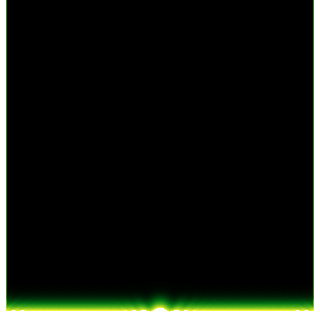 W
WA Bessel beam is a wave whose amplitude is described by a Bessel function of the first kind. Electromagnetic, acoustic, gravitational, and matter waves can all be in the form of Bessel beams. A true Bessel beam is non-diffractive. This means that as it propagates, it does not diffract and spread out; this is in contrast to the usual behavior of light, which spreads out after being focused down to a small spot. Bessel beams are also self-healing, meaning that the beam can be partially obstructed at one point, but will re-form at a point further down the beam axis.
 W
WChirped pulse amplification (CPA) is a technique for amplifying an ultrashort laser pulse up to the petawatt level, with the laser pulse being stretched out temporally and spectrally, then amplified, and then compressed again. The stretching and compression uses devices that ensure that the different color components of the pulse travel different distances.
 W
WCoherent addition of lasers is a method of power scaling. It allows to increase the output power and brightness of single-transversal mode laser.
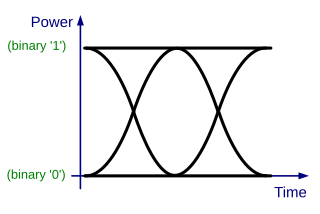 W
WIn telecommunications, extinction ratio (re) is the ratio of two optical power levels of a digital signal generated by an optical source, e.g., a laser diode. The extinction ratio may be expressed as a fraction, in dB, or as a percentage. It may be given by
 W
WFourier domain mode locking (FDML) is a laser modelocking technique that creates a continuous wave, wavelength-swept light output.
 W
WFASOR is an acronym for frequency addition source of optical radiation. The name is used for a certain type of guide star laser deployed at US Air Force Research Laboratory facilities SOR and AMOS. The laser light is produced in a sum-frequency generation process from two solid-state laser sources that operate at different wavelengths. The frequencies of the sources add directly to a summed frequency. Thus, if the source wavelengths are and , the resulting wavelength is
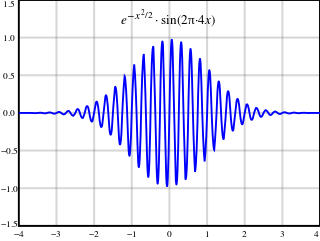 W
WIn optics, a frequency comb is a laser source whose spectrum consists of a series of discrete, equally spaced frequency lines. Frequency combs can be generated by a number of mechanisms, including periodic modulation of a continuous-wave laser, four-wave mixing in nonlinear media, or stabilization of the pulse train generated by a mode-locked laser. Much work has been devoted to this last mechanism, which was developed around the turn of the 21st century and ultimately led to one half of the Nobel Prize in Physics being shared by John L. Hall and Theodor W. Hänsch in 2005.
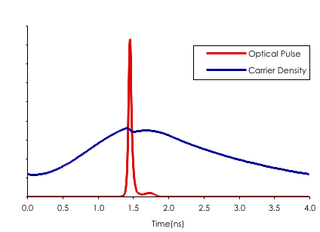 W
WGain-switching is a technique in optics by which a laser can be made to produce pulses of light of extremely short duration, of the order of picoseconds (10−12 s).
 W
WIn optics, a Gaussian beam is a beam of electromagnetic radiation with high monochromaticity whose amplitude envelope in the transverse plane is given by a Gaussian function; this also implies a Gaussian intensity (irradiance) profile. This fundamental (or TEM00) transverse Gaussian mode describes the intended output of most (but not all) lasers, as such a beam can be focused into the most concentrated spot. When such a beam is refocused by a lens, the transverse phase dependence is altered; this results in a different Gaussian beam. The electric and magnetic field amplitude profiles along any such circular Gaussian beam (for a given wavelength and polarization) are determined by a single parameter: the so-called waist w0. At any position z relative to the waist (focus) along a beam having a specified w0, the field amplitudes and phases are thereby determined as detailed below.
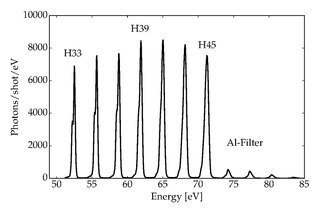 W
WHigh harmonic generation (HHG) is a non-linear process during which a target is illuminated by an intense laser pulse. Under such conditions, the sample will emit the high harmonics of the generation beam. Due to the coherent nature of the process, high harmonics generation is a prerequisite of attosecond physics.
 W
WAn integrating sphere is an optical component consisting of a hollow spherical cavity with its interior covered with a diffuse white reflective coating, with small holes for entrance and exit ports. Its relevant property is a uniform scattering or diffusing effect. Light rays incident on any point on the inner surface are, by multiple scattering reflections, distributed equally to all other points. The effects of the original direction of light are minimized. An integrating sphere may be thought of as a diffuser which preserves power but destroys spatial information. It is typically used with some light source and a detector for optical power measurement. A similar device is the focusing or Coblentz sphere, which differs in that it has a mirror-like (specular) inner surface rather than a diffuse inner surface.
 W
WLaser Physics is a monthly peer-reviewed scientific journal covering research on the physics and technology of lasers and their applications. It is owned and editorially managed by Astro Ltd. and published on their behalf by IOP Publishing. The journal was established in 1990 with Alexander M. Prokhorov as founding editor-in-chief until 2002. The current editor-in-chief is Pavel P. Pashinin. It is a sister journal to Laser Physics Letters.
 W
WLaser Physics Letters is a monthly peer-reviewed scientific journal that publishes short, rapid communications in fundamental optics and laser physics, and the application of lasers across interrelated sciences. It is owned and editorially managed by Astro Ltd and published on their behalf by IOP Publishing. The journal was established in 2004 with Pavel P. Pashinin as editor-in-chief. It is a sister journal to Laser Physics.
 W
WCertain systems can achieve negative thermodynamic temperature; that is, their temperature can be expressed as a negative quantity on the Kelvin or Rankine scales. This should be distinguished from temperatures expressed as negative numbers on non-thermodynamic Celsius or Fahrenheit scales, which are nevertheless higher than absolute zero.
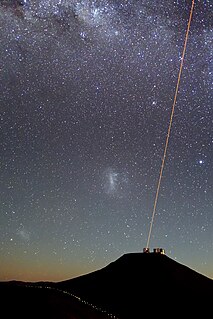 W
WAn optical amplifier is a device that amplifies an optical signal directly, without the need to first convert it to an electrical signal. An optical amplifier may be thought of as a laser without an optical cavity, or one in which feedback from the cavity is suppressed. Optical amplifiers are important in optical communication and laser physics. They are used as optical repeaters in the long distance fiberoptic cables which carry much of the world's telecommunication links.
 W
WIn optics, various autocorrelation functions can be experimentally realized. The field autocorrelation may be used to calculate the spectrum of a source of light, while the intensity autocorrelation and the interferometric autocorrelation are commonly used to estimate the duration of ultrashort pulses produced by modelocked lasers. The laser pulse duration cannot be easily measured by optoelectronic methods, since the response time of photodiodes and oscilloscopes are at best of the order of 200 femtoseconds, yet laser pulses can be made as short as a few femtoseconds.
 W
WAn optical cavity, resonating cavity or optical resonator is an arrangement of mirrors that forms a standing wave cavity resonator for light waves. Optical cavities are a major component of lasers, surrounding the gain medium and providing feedback of the laser light. They are also used in optical parametric oscillators and some interferometers. Light confined in the cavity reflects multiple times, producing standing waves for certain resonance frequencies. The standing wave patterns produced are called modes; longitudinal modes differ only in frequency while transverse modes differ for different frequencies and have different intensity patterns across the cross-section of the beam.
 W
WAn optical microcavity or microresonator is a structure formed by reflecting faces on the two sides of a spacer layer or optical medium, or by wrapping a waveguide in a circular fashion to form a ring. The former type is a standing wave cavity, and the latter is a traveling wave cavity. The name microcavity stems from the fact that it is often only a few micrometers thick, the spacer layer sometimes even in the nanometer range. As with common lasers this forms an optical cavity or optical resonator, allowing a standing wave to form inside the spacer layer, or a traveling wave that goes around in the ring.
 W
WAn output coupler (OC) is the component of an optical resonator that allows the extraction of a portion of the light from the laser's intracavity beam. An output coupler most often consists of a partially reflective mirror, allowing a certain portion of the intracavity beam to transmit through. Other methods include the use of almost-totally reflective mirrors at each end of the cavity, emitting the beam either by focusing it into a small hole drilled in the center of one mirror, or by redirecting through the use of rotating mirrors, prisms, or other optical devices, causing the beam to bypass one of the end mirrors at a given time.
 W
WA photoionization mode is a mode of interaction between a laser beam and matter involving photoionization.
 W
WA prism compressor is an optical device used to shorten the duration of a positively chirped ultrashort laser pulse by giving different wavelength components a different time delay. It typically consists of two prisms and a mirror. Figure 1 shows the construction of such a compressor. Although the dispersion of the prism material causes different wavelength components to travel along different paths, the compressor is built such that all wavelength components leave the compressor at different times, but in the same direction. If the different wavelength components of a laser pulse were already separated in time, the prism compressor can make them overlap with each other, thus causing a shorter pulse.
 W
WLaser pumping is the act of energy transfer from an external source into the gain medium of a laser. The energy is absorbed in the medium, producing excited states in its atoms. When the number of particles in one excited state exceeds the number of particles in the ground state or a less-excited state, population inversion is achieved. In this condition, the mechanism of stimulated emission can take place and the medium can act as a laser or an optical amplifier. The pump power must be higher than the lasing threshold of the laser.
 W
WPyrromethene is a dye used in solid-state dye lasers. As a structural motif it is similar to the naturally occurring tetrapyrrole class of compounds.
 W
WIn physics and engineering, the quality factor or Q factor is a dimensionless parameter that describes how underdamped an oscillator or resonator is. It is approximately defined as the ratio of the initial energy stored in the resonator to the energy lost in one radian of the cycle of oscillation. Q factor is alternatively defined as the ratio of a resonator's centre frequency to its bandwidth when subject to an oscillating driving force. These two definitions give numerically similar, but not identical, results. Higher Q indicates a lower rate of energy loss and the oscillations die out more slowly. A pendulum suspended from a high-quality bearing, oscillating in air, has a high Q, while a pendulum immersed in oil has a low one. Resonators with high quality factors have low damping, so that they ring or vibrate longer.
 W
WSelf-focusing is a non-linear optical process induced by the change in refractive index of materials exposed to intense electromagnetic radiation. A medium whose refractive index increases with the electric field intensity acts as a focusing lens for an electromagnetic wave characterized by an initial transverse intensity gradient, as in a laser beam. The peak intensity of the self-focused region keeps increasing as the wave travels through the medium, until defocusing effects or medium damage interrupt this process. Self-focusing of light was discovered by Gurgen Askaryan.
 W
WA spatial filter is an optical device which uses the principles of Fourier optics to alter the structure of a beam of light or other electromagnetic radiation, typically coherent laser light. Spatial filtering is commonly used to "clean up" the output of lasers, removing aberrations in the beam due to imperfect, dirty, or damaged optics, or due to variations in the laser gain medium itself. This filtering can be applied to transmit a pure transverse mode from a multimode laser while blocking other modes emitted from the optical resonator. The term "filtering" indicates that the desirable structural features of the original source pass through the filter, while the undesirable features are blocked. An apparatus which follows the filter effectively sees a higher-quality but lower-powered image of the source, instead of the actual source directly. An example of the use of spatial filter can be seen in advanced setup of micro-Raman spectroscopy.
 W
WIn ultrafast optics, spectral phase interferometry for direct electric-field reconstruction (SPIDER) is an ultrashort pulse measurement technique originally developed by Chris Iaconis and Ian Walmsley.
 W
WStimulated emission is the process by which an incoming photon of a specific frequency can interact with an excited atomic electron, causing it to drop to a lower energy level. The liberated energy transfers to the electromagnetic field, creating a new photon with a frequency, polarization, and direction of travel that are all identical to the photons of the incident wave. This is in contrast to spontaneous emission, which occurs at a characteristic rate for each of the atoms/oscillators in the upper energy state regardless of the external electromagnetic field.
 W
WIn optics, a supercontinuum is formed when a collection of nonlinear processes act together upon a pump beam in order to cause severe spectral broadening of the original pump beam, for example using a microstructured optical fiber. The result is a smooth spectral continuum. There is no consensus on how much broadening constitutes a supercontinuum; however researchers have published work claiming as little as 60 nm of broadening as a supercontinuum. There is also no agreement on the spectral flatness required to define the bandwidth of the source, with authors using anything from 5 dB to 40 dB or more. In addition the term supercontinuum itself did not gain widespread acceptance until this century, with many authors using alternative phrases to describe their continua during the 1970s, 1980s and 1990s.